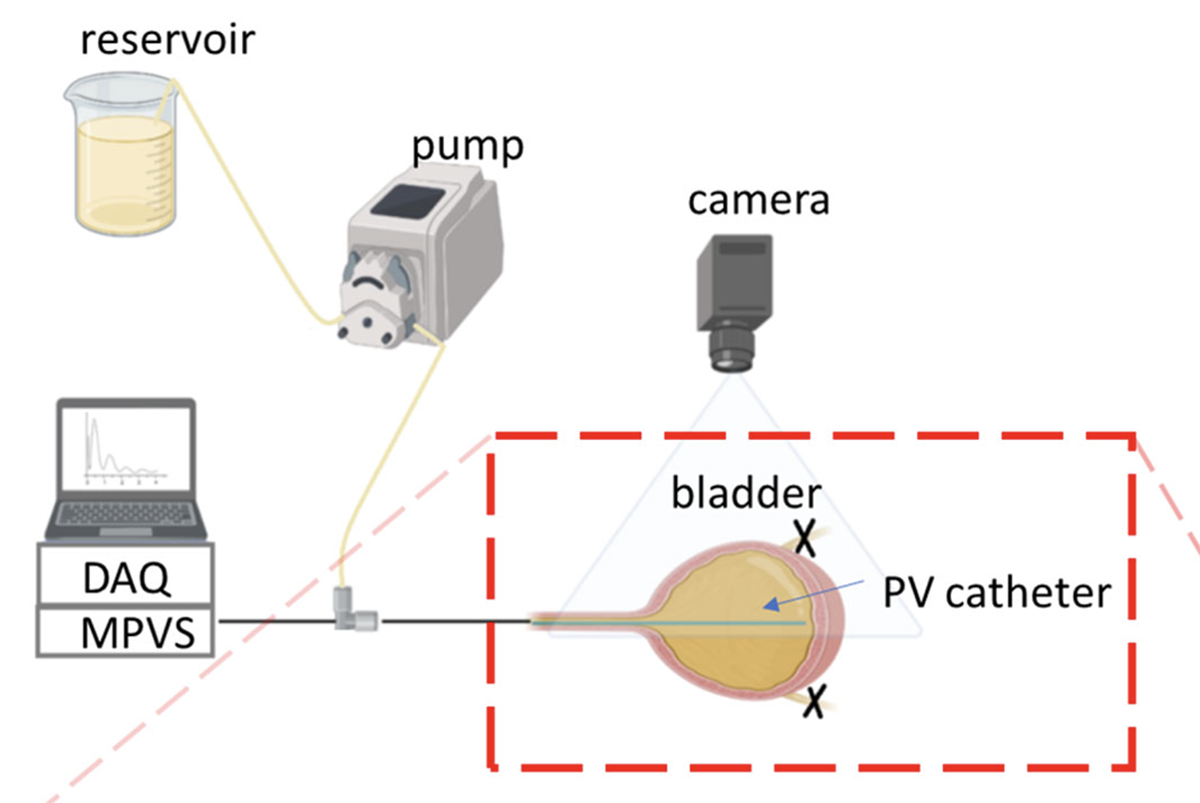2023/10/20 | Research | Biomechanics
Pressure-volume catheters for urology
The Urogenital Engineering group of the ARTORG Center, in collaboration with the Department of Urology of the Inselspital and the Cardiovascular Engineering group, has evaluated for the first time, in an ex vivo study, whether cardiac pressure-volume (PV) catheters could be applied to improve the diagnosis of lower urinary tract dysfunctions (e.g. overactive or underactive bladders). The results of this first feasibility study are promising.
 Schematic of the experimental setup (created with BioRender.com)
(https://doi.org/10.3389/fruro.2023.1258649)
Schematic of the experimental setup (created with BioRender.com)
(https://doi.org/10.3389/fruro.2023.1258649)
As PV-catheters are originally designed and optimized to measure cardiac volumes (i.e. up to 120/140 ml) the main goal of the study was to assess whether reliable dynamic measurements could be achieved in the urinary bladder which can reach much higher volumes ( 500ml or more).
The PV-catheters measured volumes reliably, when compared to the ground truth of pump volumes, and were able to detect local volume changes via their different sensing units. Authors conclude that compared to existing technology used in urology (e.g., conventional urodynamic testing), the main advantages of PV catheters would be to simultaneously measure bladder pressure and volumes and to identify local changes of bladder volume (as caused by non-voiding contractions). Both could be useful to improve the diagnosis and treatment of lower urinary tract dysfunctions.